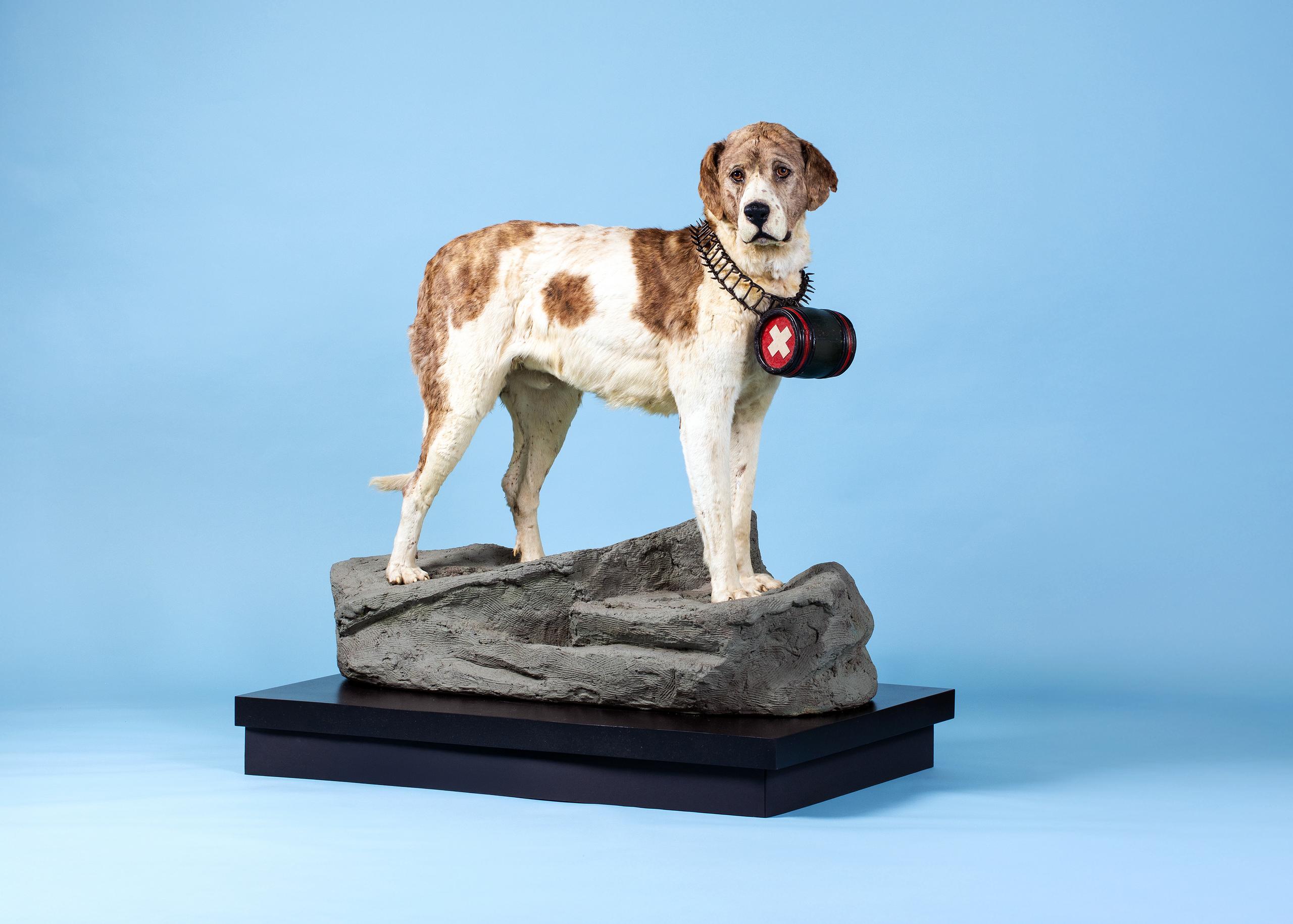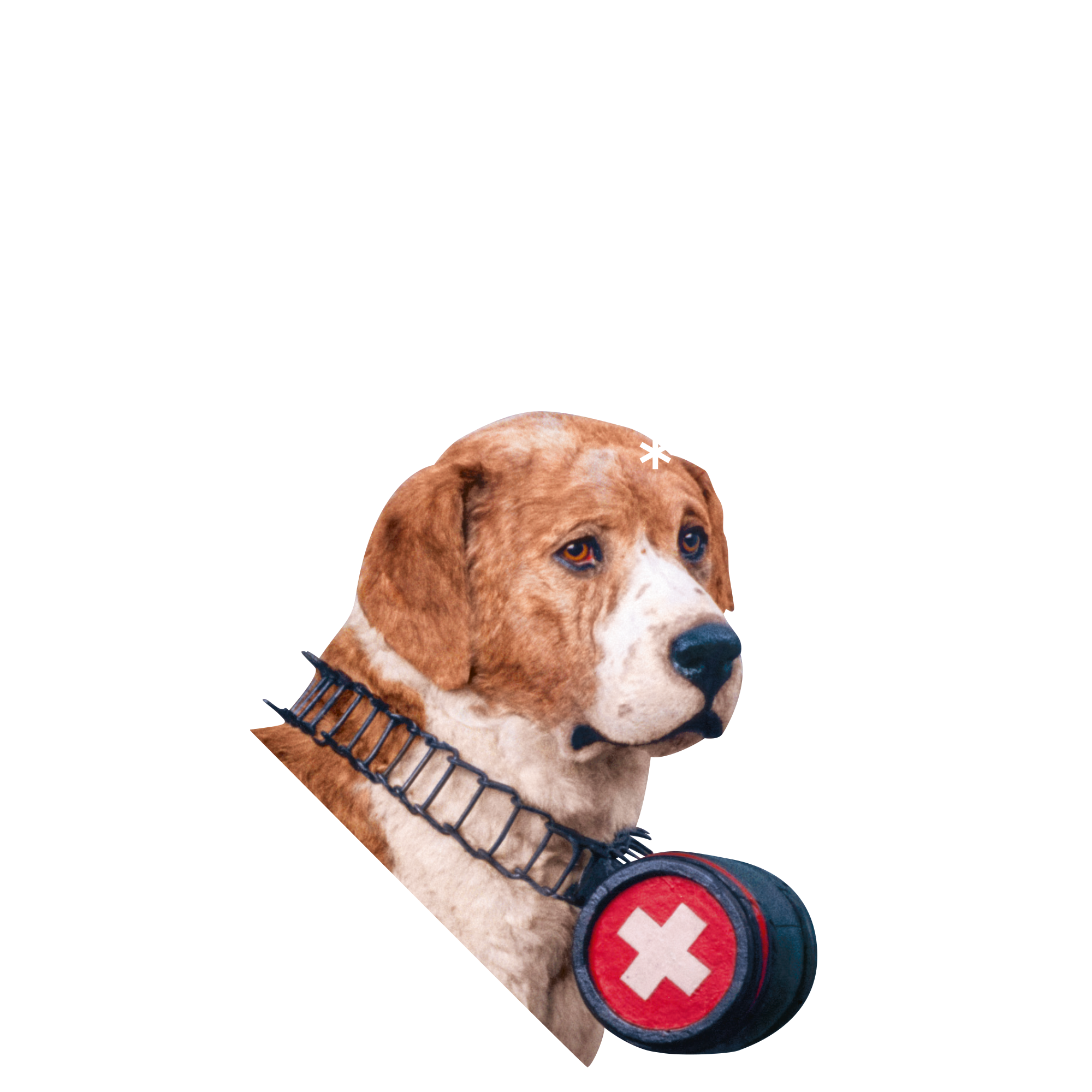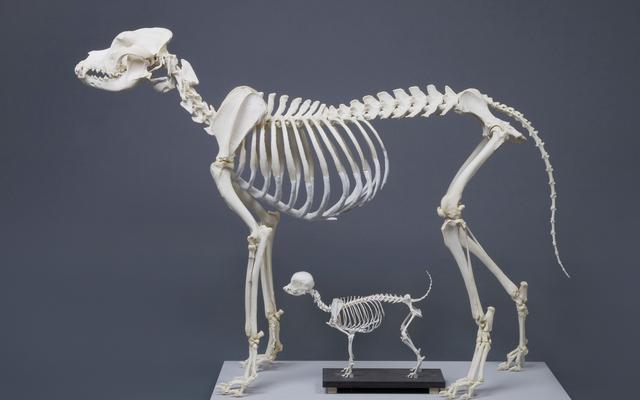Barry was born in 1800, the year that Thomas Jefferson became the third president of the United States and Schiller's Mary Stuart was performed for the first time. Barry lived as a rescue dog at the hospice on the Great St. Bernard Pass, which is situated almost 2500 metres above sea level. The hospice has been run since the 11th century by Augustinian canons. Crossing the pass used to be dangerous at any time of year, and the canons and their servants would rescue people who had got lost or become trapped in snow. As time went by, the canons began to take dogs with them when they went out looking for travellers. As a result of this collaboration between man and beast, over 2000 people were saved from death over the course of 200 years. Barry is said to have helped in the rescue of 40 people, and was legendary even during his lifetime.
The canons' rescue dogs were not like modern avalanche dogs. Their main role was to find the way back to the hospice in heavy blizzards. Barry was almost certainly an extraordinary dog, or he wouldn't have been famous even before his death. However, many of the legends which surround Barry are not based in fact.
After a century, the original mount was reworked because it was in poor condition and because the submissive pose the dog had first been preserved in no longer corresponded to the image visitors held of Barry as a courageous hero. The taxidermist Georg Ruprecht made a completely new mount of Barry in 1923, using the most modern techniques of the day. The result was a prouder-looking dog closer to the St. Bernards we know today. The coat, however, is original. Until 2014, Barry was on display in the entrance hall of the Natural History Museum in Bern. To mark the 200th anniversary of his death, the museum dedicated a permanent exhibition to him.
Boy on back: Barry is said to have set out all alone, rescued a child and returned to the hospice carrying the boy on his back. The truth is that not even the cleverest or strongest of dogs would be capable of such a feat.
Death by soldier: According to another legend, Barry was killed by a French soldier who mistook him for a wolf. While it is true that a few isolated wolves lived on the pass at this time, and that Napoleon crossed it in May 1800 with around 46,000 soldiers, Barry wasn't actually born until that same year.

Barry died in 1814 in Bern. He spent the last two years of his life in retirement and was brought to the city at the request of the prior. It is not clear why the head of the community on the Great St. Bernard Pass decided on Protestant Bern, but the story lends substance to the theory that Barry must have been a very special dog.
This exhibition is available on izi.Travel App.







